The Philippine Air Force (2010-2016)
The Philippine Air Force at present is in the midst of a transformation effort aimed at revitalizing its territorial defense capabilities while retaining the ability to support AFP internal security operations as well as national development efforts and respond to calamities.
 The second decade of the 21st Century was a busy period for the PAF as it has to perform multifaceted operations, while, the lion’s share of the effort was devoted to internal security operations. In September 2013, rouge MNLF members attempted to take over Zamboanga City and when thwarted, resorted to taking hostages among the local residents. The swift government’s response was facilitated by the airlift of reinforcements, supplies, equipment including several armored vehicles and relief goods. During the government’s attempt to regain control of the city, the Air Force flew intelligence-surveillance-reconnaissance (ISR) operations and conducted air strikes when circumstances allowed. Together with the Philippine Navy, it successfully prevented enemy reinforcements from reaching Zamboanga City coming at the sea. The PAF also provided security to the Zamboanga International Airport.
The second decade of the 21st Century was a busy period for the PAF as it has to perform multifaceted operations, while, the lion’s share of the effort was devoted to internal security operations. In September 2013, rouge MNLF members attempted to take over Zamboanga City and when thwarted, resorted to taking hostages among the local residents. The swift government’s response was facilitated by the airlift of reinforcements, supplies, equipment including several armored vehicles and relief goods. During the government’s attempt to regain control of the city, the Air Force flew intelligence-surveillance-reconnaissance (ISR) operations and conducted air strikes when circumstances allowed. Together with the Philippine Navy, it successfully prevented enemy reinforcements from reaching Zamboanga City coming at the sea. The PAF also provided security to the Zamboanga International Airport.
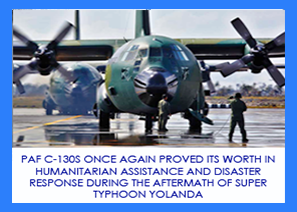 The Air Force also proved its worth in its ability as first responder during calamities. In October 2013, Central Visayas, especially the province of Bohol was hit by a powerful earthquake. True to form, the PAF transported aid teams and relief goods to Bohol. A month later, when the most powerful recorded typhoon in history, Super Typhoon Yolanda devastated Tacloban City, Leyte and other parts of the Central Philippines, the PAF quickly responded even though the headquarters of Tactical Operations Group (TOG) 8 was destroyed at Daniel Romualdez Airport.
The Air Force also proved its worth in its ability as first responder during calamities. In October 2013, Central Visayas, especially the province of Bohol was hit by a powerful earthquake. True to form, the PAF transported aid teams and relief goods to Bohol. A month later, when the most powerful recorded typhoon in history, Super Typhoon Yolanda devastated Tacloban City, Leyte and other parts of the Central Philippines, the PAF quickly responded even though the headquarters of Tactical Operations Group (TOG) 8 was destroyed at Daniel Romualdez Airport.
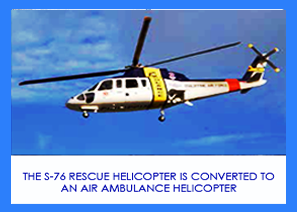 While medical and HADR teams, government troops and aid to the victims were flown in, refugees from affected areas were evacuated by air to Colonel Jesus Villamor Air Base (CJVAB). When these people arrived at the base, they were given food, medicine and other assistance. For its part, BGen Benito N Ebuen Air Base (BGBNEAB) in Cebu became the hub of a massive international relief effort by air from 29 countries.
While medical and HADR teams, government troops and aid to the victims were flown in, refugees from affected areas were evacuated by air to Colonel Jesus Villamor Air Base (CJVAB). When these people arrived at the base, they were given food, medicine and other assistance. For its part, BGen Benito N Ebuen Air Base (BGBNEAB) in Cebu became the hub of a massive international relief effort by air from 29 countries.
As the Air Force transitions to territorial defense, it has increased its aerial surveillance flights over the West Philippine Sea. These flights provided defense officials and other policy makers with developments in the area, particularly illegal construction activities by other countries. Their value was also recognized in early 2015 by no less than then Honorable Alberto del Rosario, Secretary of Foreign Affairs who thanked the Air Force for providing much needed information to members of the Philippine Delegation at the United Nations Permanent Court of Arbitration on the South China Sea maritime dispute.
Air Force national development activities include environmental protection, support to law enforcement, assisting in socio-economic development and participation in the Habitat for Humanity Program as well as Brigada Eskwela among others. Several notable PAF accomplishments in national security related roles were the effort rendered to support the visit of His Holiness Pope Francis to the Philippines in January 2015. Another instance was the support provided during the November 2015 Asia-Pacific Economic Council (APEC) Summit. The Air Force provided security and crowd control to facilitate the said events and ensure the safety of all international leaders.
It should also not be forgotten that Air Force personnel represented their country with honor in the fulfillment of its international commitment under the United Nations Charter. One type of Air Force International Defense and Security Engagement (IDSE) was its contribution to United Nations’ mandated Peacekeeping Operations to both individual and unit levels. PAF personnel were deployed as part of AFP PKO contingents in East Timor, Golan Heights Haiti, Liberia, the Ivory Coast, India and Pakistan. However, the PAF has ceased on sending its contingent to East Timor since the completion of the PAF’s mandate thereat on 31 December 2012. In 2013, the PAF has pulled out its contingent in Sudan due to Crisis Alert Level III; the same thing happened in Golan Heights due to security reasons in 2014; as well as in Liberia because of the Ebola Virus outbreak, wherein PAF contingent were repatriated on 12 November 2014.
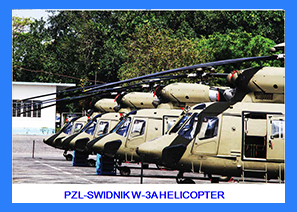 Aside from its operational accomplishments in the past six years, the PAF has made great strides in capability development especially the acquisition of new aircraft. It began with the acquisition of SF-260 trainers from 2010 to 2011. These were followed by the arrival in 2012 of PZL-Swidnik W-3A “Sokol” helicopters from Poland. Three years later, large scale deliveries of refurbished and new aircraft were completed such as CASA C-295 medium lift transports, Bell 412EP new combat utility helicopters, Agusta-Westland AW-109E attack helicopters and refurbished UH-1D helicopters. The highlight of these aircraft acquisition however was the successful arrival of two (2) FA-50PH Lead-in Fighter Trainer/ Surface Attack Aircraft (LIFT/SAA) last 28 November 2015, providing the country its first new supersonic jets in 50 years. Recently, it received another C-130T from the United States.
Aside from its operational accomplishments in the past six years, the PAF has made great strides in capability development especially the acquisition of new aircraft. It began with the acquisition of SF-260 trainers from 2010 to 2011. These were followed by the arrival in 2012 of PZL-Swidnik W-3A “Sokol” helicopters from Poland. Three years later, large scale deliveries of refurbished and new aircraft were completed such as CASA C-295 medium lift transports, Bell 412EP new combat utility helicopters, Agusta-Westland AW-109E attack helicopters and refurbished UH-1D helicopters. The highlight of these aircraft acquisition however was the successful arrival of two (2) FA-50PH Lead-in Fighter Trainer/ Surface Attack Aircraft (LIFT/SAA) last 28 November 2015, providing the country its first new supersonic jets in 50 years. Recently, it received another C-130T from the United States.
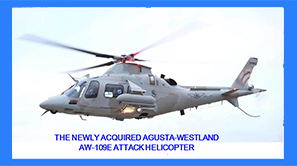 To improve its interoperability in joint operations, the PAF in conjunction with the Philippine Navy has been regularly conducting the Exercise Dagat Langit (DAGIT) since 2011. Starting as a seminar type exercise during its inaugural activity, it progressed to test PAF-PN joint planning, procedures and communications. Another area where it made great strides in learning the lessons of Yolanda was the establishment and training of Disaster Response Units (DRU).
To improve its interoperability in joint operations, the PAF in conjunction with the Philippine Navy has been regularly conducting the Exercise Dagat Langit (DAGIT) since 2011. Starting as a seminar type exercise during its inaugural activity, it progressed to test PAF-PN joint planning, procedures and communications. Another area where it made great strides in learning the lessons of Yolanda was the establishment and training of Disaster Response Units (DRU).
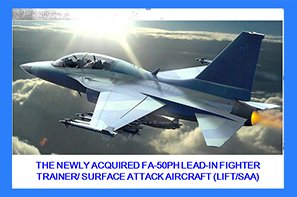 At present, the Air Force is continuing the acquisition of new capabilities with more FA-50PH LIFT/SAA as well as C-130T and NC212i transports scheduled to arrive between 2016 and 2017. Complementary systems such as air defense radars will arrive in the near future. As part of the efforts to restore a credible air defense capability, the Air Defense Wing (ADW) started reorganization efforts geared towards its upgrading to the Air Defense Command (ADC) along with the reactivation of the 5th Fighter Wing by 2016 and upgrading of 580th Aircraft Control and Warning Group (ACWG) to the 580th Aircraft Control and Warning Wing (ACWW) by 2017.
At present, the Air Force is continuing the acquisition of new capabilities with more FA-50PH LIFT/SAA as well as C-130T and NC212i transports scheduled to arrive between 2016 and 2017. Complementary systems such as air defense radars will arrive in the near future. As part of the efforts to restore a credible air defense capability, the Air Defense Wing (ADW) started reorganization efforts geared towards its upgrading to the Air Defense Command (ADC) along with the reactivation of the 5th Fighter Wing by 2016 and upgrading of 580th Aircraft Control and Warning Group (ACWG) to the 580th Aircraft Control and Warning Wing (ACWW) by 2017.
